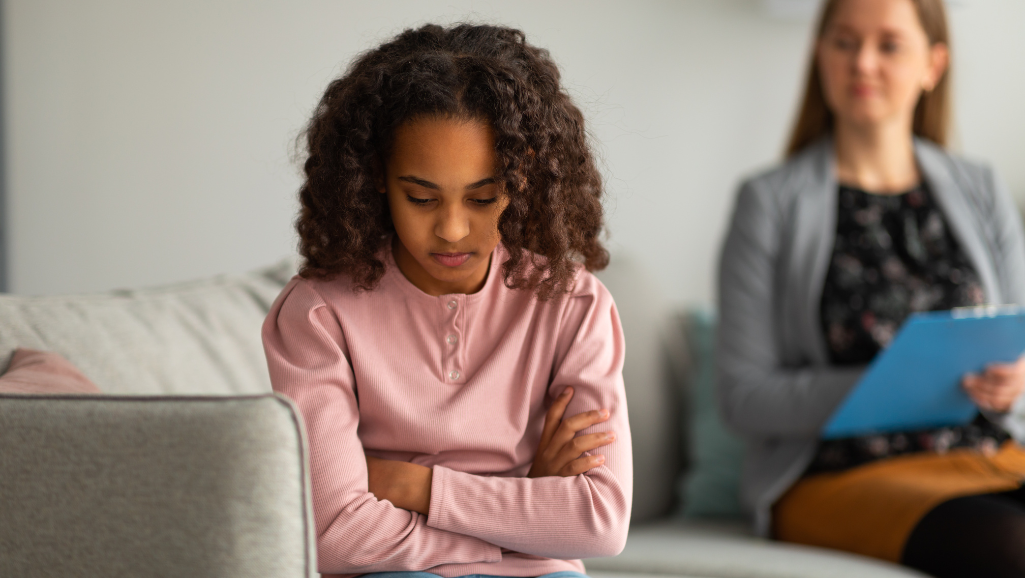Life’s challenges often bring emotional weight. Many people experience overwhelming feelings, but recognizing them is the first step toward balance. These emotions, though tough, are natural responses to life’s pressures.
When these feelings linger, they can affect daily life. Physical signs like fatigue or irritability may appear. Understanding these signals helps in regaining control and finding calm.
Peace begins with awareness. This article explores practical ways to manage symptoms while offering support. Science-backed strategies can make a real difference in improving well-being.
Key Takeaways
- Recognizing emotional struggles empowers personal growth.
- Physical and mental symptoms often signal deeper concerns.
- Small, consistent steps lead to lasting relief.
- Professional guidance provides tailored coping methods.
- Self-awareness builds resilience over time.
Define Stress and Anxiety
Daily pressures trigger natural reactions in our minds and bodies. These responses help us navigate challenges, but sometimes they linger longer than needed. Recognizing them is key to maintaining balance.
What Is Stress?
The body reacts to immediate demands like tight deadlines or caregiving tasks. This reaction prepares us to handle tough situations effectively. It’s like an internal alarm system kicking into gear.
Physical signs often appear during demanding moments. Increased heart rate and muscle tension show the body’s readiness for action. These changes usually fade once the situation passes.
What Is Anxiety?
Unlike temporary reactions, this feeling persists without clear reasons. Imagine still feeling uneasy days after fixing a flat tire. The mind stays alert even when no real threat exists.
Both experiences share similar physical effects. Sleep troubles and digestive changes might occur in either case. The difference lies in duration and triggers.
“The autonomic nervous system activates our survival instincts during challenging moments.”
Short-term reactions help us perform under pressure. Ongoing tension without resolution affects wellbeing. Learning these distinctions empowers better self-care.
Key Differences Between Stress and Anxiety
Not all overwhelming feelings follow the same pattern—some fade quickly, while others linger. Understanding these contrasts helps tailor coping strategies effectively.
Timeline Matters: Stress often lasts days or weeks, tied to specific events like deadlines. Anxiety, however, can persist for months, even without obvious causes. A 2020 study found 63% of anxiety cases lack identifiable triggers.
Ask yourself: “Can I pinpoint the source?” If not, it might signal deeper unease. For example, post-move stress that evolves into constant worry reflects this shift.
- Stress resolves when the situation passes—think relief after a big presentation.
- Anxiety lingers, like background noise that won’t quiet down.
- Disorders (e.g., PTSD) involve disproportionate reactions to daily life.
“Chronic stress can rewire the brain, blurring the line between temporary tension and long-term anxiety.”
Recognizing these differences empowers better self-care. Tools like identifying triggers and timelines offer clarity. Small steps today prevent bigger challenges tomorrow.
Symptoms of Stress and Anxiety
Your body sends signals when emotions become overwhelming. These signs vary, from fleeting discomfort to persistent distress. Tracking them helps identify patterns and take action early.
Physical Symptoms
The body reacts first. You might notice a racing heart, sweating, or unexplained aches. Stress rashes—pink hives—can appear during intense periods and often need antihistamines.
Common physical symptoms include:
- Dizziness or headaches
- Digestive issues (nausea, diarrhea)
- Shoulder or neck tension
- Fatigue despite adequate sleep
Psychological Symptoms
The mind echoes these changes. Persistent worry, trouble focusing, or a sense of doom mark psychological symptoms. Some describe numbness or tingling during panic episodes.
“A symptom diary helps spot triggers. Note when and where unease peaks.”
Behavioral Symptoms
Actions often shift under pressure. Avoiding social events or relying on substances are behavioral symptoms. Irritability may strain relationships, while procrastination worsens workloads.
Red flags: Social withdrawal, drastic appetite changes, or neglecting self-care. Early recognition prevents escalation.
Common Causes of Stress and Anxiety
Modern life brings constant demands that test our resilience. From career goals to personal relationships, these pressures shape how we react. Understanding their roots helps manage their impact.
Major life transitions often trigger emotional weight. Events like marriage, childbirth, or loss create ripples in daily routines. Even positive changes—like moving—can disrupt stability.
Financial pressure weighs heavily, with 72% of Americans reporting money-related unease. Unexpected bills or job insecurity amplify this strain. Small stressors, like traffic or deadlines, compound over time.
“Cumulative stress theory shows how minor frustrations build into overwhelming tension.”
Workplace demands rank high among triggers. Heavy workloads, unclear expectations, or fear of layoffs fuel unease. High-stakes situations, like presentations, heighten this effect.
Family dynamics add another layer. Caregiving roles or strained relationships drain emotional reserves. Social expectations—especially post-pandemic—intensify these challenges.
Hidden factors play a role too. Caffeine, poor sleep, or skipping meals worsen reactions. Recognizing these subtle triggers empowers better coping strategies.
When Stress and Anxiety Become Disorders
The line between temporary worry and a disorder isn’t always clear. When reactions persist for months—like the six-month threshold for generalized anxiety disorder (GAD)—they cross into clinical territory. Daily life may feel overshadowed by unease, even without obvious triggers.
Warning signs include two or more weeks of impaired functioning. Avoiding social events, struggling at work, or neglecting self-care are red flags. For 60% of people, these challenges coincide with depression, complicating recovery.
Conditions like OCD illustrate how rituals (e.g., excessive handwashing) become coping mechanisms. A therapist notes: “When normal coping becomes clinical, it’s time to seek support.” Neurochemical shifts, like prolonged cortisol exposure, can alter brain structure over time.
“Cognitive Behavioral Therapy rewired my panic responses. Now, I face challenges without fear.” —Recovery story via CBT
Chronic stress fuels this cycle, but hope exists. Proven stress management techniques and professional guidance restore balance. Early action protects long-term mental health.
Effective Strategies to Manage Stress and Anxiety
Small daily choices shape our emotional resilience in powerful ways. Proven strategies blend simple activities with science-backed methods. This approach creates sustainable habits rather than quick fixes.
Lifestyle Changes
Morning momentum matters. A 15-minute yoga flow jumpstarts circulation and focus. Pair it with a magnesium-rich breakfast—spinach omelets or almond butter toast—to nourish the nervous system.
Seven-day reset plan:
- Digital boundaries: Set app limits before 8 AM and after 9 PM
- Caffeine taper: Reduce intake by 25% weekly with herbal tea swaps
- Movement snacks: Three 5-minute walks between tasks
“Replacing my afternoon coffee with chamomile tea cut my jitters by 40% in two weeks.” —Nutritionist-approved caffeine protocol
Relaxation Techniques
The 4-7-8 breathing exercise works like a natural tranquilizer. Inhale for 4 counts, hold for 7, exhale for 8. Repeat this cycle four times during tense moments.
Evening wind-down routine:
- Journal using prompt: “Today I handled ___ well”
- Progressive muscle relaxation starting from toes to forehead
- Cool, dark bedroom with white noise for optimal sleep
These strategies build cumulative benefits. Consistency matters more than perfection when learning to manage stress effectively.
When to Seek Professional Support
There comes a moment when self-help isn’t enough. If daily tasks feel impossible or joy fades for weeks, a mental health professional can provide the right tools. Studies show 83% of people improve with combined therapy and lifestyle changes.
- Missing work or social events regularly
- Using substances to cope with emotions
- Persistent physical symptoms without medical cause
- Thoughts of self-harm or suicidal thoughts
“My therapist taught me CBT techniques that changed my life in eight weeks—tools I couldn’t have found alone.”
Modern healthcare offers multiple paths:
- CBT: Challenges negative thought patterns
- ACT: Focuses on value-based living
- Exposure therapy: Gradually reduces fears
For immediate help, text HOME to 741741 or call 988 in the U.S. These crisis lines provide free, confidential support 24/7. You’re never alone in this journey.
Preparing for your first session? Bring notes on symptoms, medical history, and goals. Many mental health professionals offer sliding-scale fees or accept insurance—don’t let cost delay care.
Conclusion
Every step toward balance matters in your mental health journey. Recognizing the difference between temporary stress and lingering anxiety empowers better choices.
Progress, not perfection, builds resilience. Studies show 90% see improvement with professional support. Explore community hubs or therapy options—help is within reach.
Start small: a mindful walk, a deep breath, or reaching out. Your life can shift toward calm with each intentional act. Clarity and peace grow from understanding.











